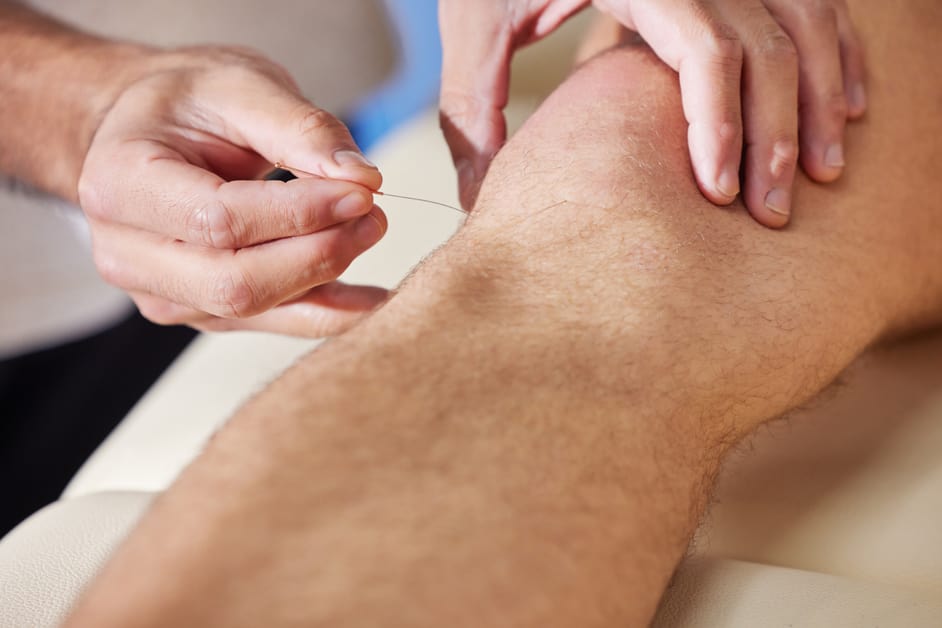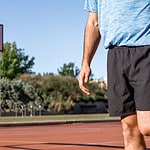Introduction to Acupuncture
Acupuncture is an ancient Chinese medical practice that has been around for thousands of years. It focuses on balancing yin and yang for health. This is done by inserting needles into the body to restore balance. This article explains the basics of acupuncture. Plus, learn how it can be used to treat knee arthritis pain.
What is Acupuncture?
Acupuncture has roots in ancient Chinese tradition. It is based on qi, an energy system, which when blocked or unbalanced can cause pain and other health issues. Acupuncturists insert needles into points known as acupoints, to restore the flow of qi and alleviate the symptoms.
It is used for a variety of purposes, such as pain relief, chronic diseases, anxiety and fertility treatments. It has been proven effective for low back pain, neck and shoulder pain, arthritis in the knee joint, headaches/migraines and more.
The needle insertion itself is not painful. After 10-20 minutes of needles placed in various points, you may feel relaxed or euphoric due to endorphins released by your body. Results are usually seen after several visits – typically five or more depending on the condition.
How Does Acupuncture Work?
Acupuncture is an age-old Chinese medicinal practice. It is based on the notion of Qi. This is an energy pathway that helps vital organs. Acupuncture is used to rebalance blocked Qi and reduce inflammation.
To do this, needles are inserted into certain points on the body. The depth of the needles varies from a few millimeters to five centimeters. Most people feel nothing, but sometimes experience tingling, warmth, or slight pain. This quickly fades and people usually relax during treatment.
The first visit includes questions about health, lifestyle and diet. This is to create a personalized treatment plan. For example, for knee arthritis, three to five treatments may be needed. Other methods, such as diet changes and herbal supplements, may also be suggested.
Treatment usually lasts one to two hours. Specific guidelines can be provided during the initial consultation.
Acupuncture for Knee Arthritis
Acupuncture is becoming more accepted for reducing knee pain from arthritis. It works by using needles to stimulate the body’s energy. It can give relief from the pain and swelling of knee arthritis.
Here’s what to expect when having acupuncture treatments:
Benefits of Acupuncture for Knee Arthritis
Acupuncture is a safe and successful way to treat different conditions, including knee arthritis. This Chinese medicine uses thin needles to be put into special areas of the body. Studies show it can reduce pain and make the function better for people with all types of arthritis, not just knee.
The advantages of using acupuncture for knee arthritis include:
- less inflammation
- more blood flow to the area
- more endorphins to reduce pain and make you feel better
- reduced swelling and stiffness in your joints
- increased range of motion
Acupuncture is known to help with relaxation. It can reduce stress levels and help you manage the symptoms of knee arthritis. This can make it easier to move around while doing normal activities. It may even help with discomfort from sore muscles or swollen ligaments that come with knee arthritis flares.
In addition to relieving pain, acupuncture can help restore normal joint movement and elasticity in your knees. This is done by pressing certain points on your legs to adjust the energy balance in your body. Your acupuncturist may also give advice about food or suggest herbal remedies to take away extra pain from knee arthritis.
What to Expect During Treatment
Acupuncture is a safe and effective way to treat knee arthritis, according to the American Academy of Pain Medicine. Generally, 6-10 treatments are necessary for full results. To get the best outcome, it’s recommended to have acupuncture sessions regularly – one to two times a week.
The first step is a consultation. Your acupuncturist will take your medical history and examine the affected area. They will decide which points to target, and then insert needles into those specific points. The needles are kept in place for 25-30 minutes.
The experience is unique to each patient, but some may feel tingling or buzzing during insertion or dispersal of energy. With more treatments, pain could be eased and the joint will have more range of motion. Endorphins are released from needles, which leads to pain relief. Patients might also feel relaxed during the procedure.
Preparing for Acupuncture
Ready to try acupuncture for your knee arthritis? Before you get started, make sure you’re prepared! Here’s some tips to consider:
- Ask your practitioner any questions you have before beginning treatment. That way, you’ll be sure to get the most out of the natural treatment.
What to Wear
When heading to the acupuncturist, comfort is key. Avoid restrictive clothing like tight jeans and trousers. Go for flowing skirts, caftans, or yogawear. Also, pick loose-fitting tops. This way, the practitioner can view your breath movements.
Additionally, wear socks for treatment. Keeping your feet warm can help balance out energy blocks. Shorts or a swimsuit also serve as an easy option for leg treatment. Arrive early to give yourself time to change and settle down after a hectic day.
What to Bring
Remember to bring a few things for an acupuncture appointment:
- Paperwork from your primary care physician, if available. This can help guide the acupuncture practitioner.
- Comfy clothes, like loose-fitting shirts and pants.
- Medical-grade pads, called patches, if needed.
- A list of medications and supplements you take.
- Relevant health info to communicate with your practitioner before the treatment plan begins.
Aftercare
After your acupuncture appointment, get the best results! Understand the aftercare instructions. Knee arthritis pain? Severity matters. Here are some general recommendations to focus on recovery. Let’s check ’em out!
- Focus on relaxation.
- Stay hydrated.
- Avoid strenuous activities.
- Eat healthy and nutritious food.
- Take warm baths.
- Avoid alcohol and smoking.
Tips for Recovery
To recover after acupuncture therapy, follow these tips! They can help the treatment be more effective and reduce any bad effects:
- Drink lots of water to flush out toxins from the arthritis pain.
- Don’t do strenuous activities like heavy lifting, running, or extreme sports.
- Use supports or braces on your legs to reduce pain.
- Do low-impact aerobics for healing and preventing stiff joints.
- Use hot/cold therapy – alternate between ice and hot water bottles/heating pads for 10 minutes at a time.
- Take NSAIDs if your doctor recommends them.
- Speak to the acupuncture practitioner before each session and tell them about any changes in symptoms. This will help the treatment be safer and more successful.
Potential Risks and Side Effects
Acupuncture is considered safe and has minimal side effects. But, it is important to keep in mind the risks and potential side effects. Those with medical conditions such as diabetes, heart disease, bleeding disorders, or cancer should consult a healthcare provider before getting acupuncture.
Common side effects are temporary and include soreness, bruising, or bleeding at the needle insertion site. It is important to drink plenty of water before and after the procedure. People should also avoid excessive sun exposure or hot baths after treatment.
When done by a trained and qualified practitioner, acupuncture has few risks. However, infections or organ puncture can occur if the needles are used incorrectly. It is essential to seek out an experienced practitioner when considering alternative treatments such as acupuncture.
Conclusion
Acupuncture is a successful way to ease knee arthritis pain. Not only does it manage joint pain, but also it can reduce stiffness and aches. It is a natural, safe solution that offers long-term help.
Let us look at the final thoughts on using acupuncture for knee arthritis pain:
Summary of Acupuncture for Knee Arthritis
Acupuncture is a famous form of Chinese traditional medicine. It is used to lower pain, tension, and swelling due to medical conditions like knee arthritis. It can be used as an alternative or with medical treatments for long-term relief.
Before using acupuncture for knee arthritis, decide if it will be used by itself or with other treatments. Ensure the acupuncturist has experience with traditional Chinese medicine and western methods.
The goal of acupuncture is reducing pain around the affected area by targeting key triggers. Needles range from small to large, depending on the desired relief. Common acupressure points are the outside edge of each kneecap, the center between two lower joints in the thumb, two-thirds down each thighbone, and where a person wears their belt.
The effects are not immediate after one session. Common benefits include:
- Reduced swelling
- Decreased inflammation
- Better flexibility
- Increased range of motion
- Improved sleep quality
- Reduced fatigue due to better blood flow
Commit to at least five sessions over three months and follow lifestyle adjustments, such as dietary changes or exercises.
Frequently Asked Questions
Q: What is acupuncture?
A: Acupuncture is an ancient Chinese healing practice that involves inserting thin needles into specific points on the body to help promote natural healing, reduce inflammation, and increase energy flow.
Q: How does acupuncture work to help with knee arthritis pain?
A: Acupuncture helps to reduce inflammation, reduce pain, and improve circulation, which helps to reduce stiffness and improve mobility in the knee joint.
Q: What should I expect during an acupuncture treatment for my knee arthritis?
A: During an acupuncture treatment for knee arthritis, your practitioner will insert needles into specific points on your body. The needles will be left in place for 10-20 minutes, during which time your practitioner may use other techniques such as heat or electric stimulation to further reduce pain and inflammation.





